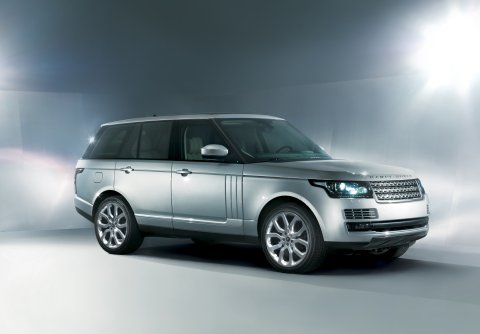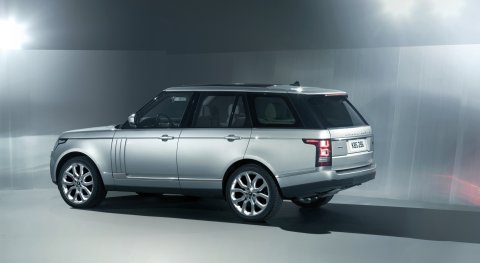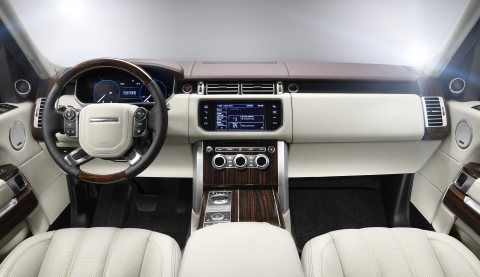|

Ever since Tata Motors unit, Jaguar Land Rover, unveiled the fourth-generation Range Rover yesterday (August 14), opinion seems to be divided on the new model. That’s not news: every time there’s a new car, opinion is divided. Some like the old model’s styling, having become familiar with it. The new one is too radical, too odd—criticisms that seem to vanish after the new one then becomes familiar.
Judging by the comments at the AROnline group on Facebook—always a good place to get motor-loving netizens’ opinions, especially if they relate to the British Leyland saga—there are a few about the styling (mine included), while others discuss the type of clientèle that the new Range Rover will target. Chelsea tractors, say the detractors, for drug dealers and rappers—while those defending the new car say that JLR has got it right by simply giving the customers what they want. Too many, it is pointed out, fall by the wayside when the customer is ignored.
The comments are all valid, especially when one considers a sub-brand that has been with us for 32 years, and Range Rover, then, means a lot of different things to different people. To Tata itself, it may well be the jewel of the crown(and the pun was intended), a luxury car whose positioning is relatively unassailable, one that has been able to fend off some very expensive four-wheel-drives while remaining capable off-road.
There are those who think of Range Rover as the gentleman farmer’s vehicle, a fairly spartan effort but fully functional. It slowly evolved—very slowly as far as cash-strapped and controversial British Leyland was concerned in the 1970s—before gaining four doors, then a longer wheelbase, in the next decade.
The Chelsea tractor positioning really began when Range Rover finally went on sale in the United States. It had been slowly gentrifying in Britain over the years, gaining more luxuries, but when the Range Rover hit American shores in the 1980s—‘We brake for fish’ in an ad headline comes to mind—it was not only off-road capability the company was selling, but British snobbery, advertisements featuring royal warrants, and the sort of things that American manufacturers are generally denied. It was a great point of difference, and it was used well.
Pegasus, the second-generation Range Rover (which is commonly called P38 by the public) built on that, but even in 1995, commentators said that it was hard to see it being regarded as a design classic. Maybe Land Rover itself thought that there would be some backlash, keeping the old model in production for a little while longer as the Range Rover Classic, but the press was right. While Pegasus lasted seven years, it’s not really regarded as a classic; it’s an evolution of the species, but nothing more.
For the last ten years, it was the BMW-developed Range Rover that has flown the company flag, one which, from memory, elicited few criticisms. It was instantly accepted by most of the Roveristi: it had shades of the original but took the themes into the 21st century. It was loftier than Pegasus, since it had to stand well clear of the BMW X5, initially meant to be its sister car, even if it wound up being launched under Ford ownership. It’s 1,928 mm wide, which puts it at a shade narrower than the Rolls-Royce Ghost. It came to define Range Rover and few remember than Pegasus ever existed—except in retrospectives like this.
Which brings me to the 2012 model, for the 2013 model year. It’s 480 kg lighter, says JLR, thanks to the greater use of aluminium, but the company neglects to tell us how heavy this makes it. (Depending on the model, it’s 2,100 kg for the turbodiesels, and 2,230 kg for the five-litre V8.) It’s a clean-sheet design and it’s more agile. It has a re-engineered air suspension. But, leading the release is a first paragraph telling us that it’s the most luxurious Range Rover ever. It is, as its supporters say, giving the customers what they want. If you carve out a rich niche, Lee Iacocca once said, you can be around for a long, long time.
It’s the design that has me a bit worried, because it is to the third-generation model what Pegasus was to the second, in my opinion. Of course it couldn’t stagnate: change is good, and it must happen in car design. The official word is this: ‘The all-new Range Rover has a clean and elegant shape which is derived from a fresh new interpretation of Range Rover design cues. While instantly recognizable as a Range Rover, the new vehicle takes a significant step forward with a bold evolution of the model’s iconic design language.
‘“Designing the next generation Range Rover, following over forty years of success, came with a huge responsibility to protect the DNA of such an icon,” said Gerry McGovern, Land Rover Design Director and Chief Creative Officer.
‘“Our design team worked incredibly hard to capture the elegant proportions and pure surfaces which have been a feature of the best Range Rover designs.”’
McGovern, who has been behind some of my favourite designs, including our Car to Be Seen in 2012 (see issue 28), the Range Rover Evoque, is right when it comes to pure surfaces for the most part. And maybe in delivering the packaging demanded by customers, his team had to create a longer rear overhang, which, to me, is the new design’s Achilles’ heel. The bumper line has to head upwards in an effort to lighten the rear section’s weight, which is a good trick, and it provides the new model with a sense of modernity. The Evoque-like face is acceptable in creating a family look, and it has to be tall in keeping with the luxury positioning. But will the vertical strakes on the doors date well or will they be seen as fussy? And, after all this, just what is it saying about the people who drive one?
‘Fussy’ is perhaps the label I would give to the new car. While I accept that McGovern has gone for purity—the bonnet and bumper are places where greater fussiness could have been injected but the design team rightly have held back—those bits of ornamentation, like the front doors, seem a little, well, pretentious. I realize these are meant to suggest the vents in the front wings from the previous model, and they give character to what would be a fairly dull mid-section, but they suggest to me that the ‘drug dealers and rappers’ that one detractor are more the target, those seeking decoration rather than restraint, those needing people to look at them rather than letting their own accomplishments and reputation be their guiding lights.
And that might well be the source of discomfort for some: just what Range Rover is picking up on in the world today.
That once upon a time, we aspired to being sensible and restrained, and let our deeds show through. That in transport—even when we chose a Range Rover—we still sought practicality.
That now, in the early 2010s, we need to show off, let our possessions spell out a story of material wealth, and stuff the sense of character. It doesn’t matter that things aren’t practical if they are imposing.
Or maybe all of this is bollocks and, come 2014, no one will blink an eyelid about the new Range Rover and those little déco flourishes are just representative of a mere trend in design, part of the evolution of the discipline. •


|
 |
‘Fussy’ is perhaps the label I would give to the new car. While I accept that McGovern has gone for purity—the bonnet and bumper are places where greater fussiness could have been injected but the design team rightly have held back—those bits of ornamentation, like the front doors, seem a little, well, pretentious
Jack Yan is publisher of Lucire.
| Related articles |
 |
Evoking style in town and country
Among the Lucire team, photographer Stephen Ciuccoli knows Land Rovers more than the rest of us, so he was the perfect man to evaluate the most talked-about SUV of the year, the Range Rover Evoque
photographed by the author |
 |
The sensible poser
Jack Yan tests the BMW X6 Xdrive40d, the diesel counterpart to an SUV we love. It’s better for the environment and your pocket, so we should love it more, right?
photographed by the author |
 |
BMW X5: power ranger
Great for the school run and full of practicality? The X5 may well be those
things, but, as Jack Yan discovers, BMW has given this turbodiesel SUV a welcome surprise
photographed by the author |
|

